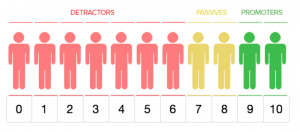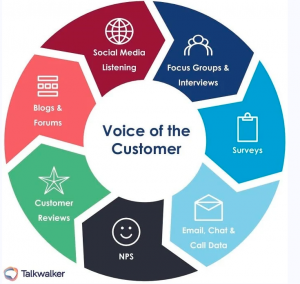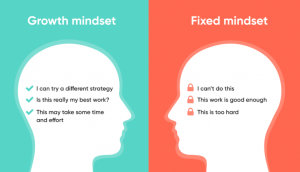In the ever-evolving landscape of business, customer satisfaction and understanding play pivotal roles in determining success. One of the most potent tools in achieving these goals is through customer surveys and feedback loops. These mechanisms provide valuable insights into customer perceptions, preferences, and pain points, allowing businesses to refine their strategies and enhance customer engagement. In this comprehensive guide, we will delve into the world of customer surveys and feedback loops, exploring their importance, implementation, and benefits.
Feedback Loops: A Key to Continuous Improvement
Feedback loops are a fundamental concept in business strategy and customer relationship management. They constitute a cyclical process wherein customer feedback is collected, analyzed, and used to improve products, services, and processes. These loops bridge the gap between a business and its customers, fostering a two-way communication channel that thrives on the exchange of insights.
Examples of Feedback Loops:
Feedback loops manifest in various forms across industries. Consider a scenario in which an online retailer sends follow-up emails to customers after their purchase, encouraging them to share their thoughts on the buying experience. This feedback, whether positive or negative, helps the retailer refine its website’s user interface, product descriptions, and checkout process.
A classic example of a feedback loop can be found in the realm of online retail. Imagine a customer purchases a product from an e-commerce platform and receives an email inviting them to leave a review. If the customer provides positive feedback, this information not only influences potential buyers by highlighting the product’s merits but also serves as constructive feedback for the retailer. The positive review reinforces the retailer’s decision to offer the product, contributing to improved inventory management, while simultaneously boosting the customer’s confidence in their purchase. On the other hand, if the customer expresses dissatisfaction, the retailer gains valuable insights into potential areas for improvement, allowing them to refine their product offerings and customer experience based on real-time feedback. This continuous loop of customer input fuels the retailer’s ability to adapt and enhance its offerings, underscoring the power of feedback loops in driving growth and customer satisfaction.
Feedback Questions to Ask:
Crafting effective feedback questions is an art that involves balancing specificity and openness. Inquiring about the ease of navigation on a website, the helpfulness of customer support, or the overall satisfaction level after a service interaction are all examples of questions that yield actionable insights.
Feedback Mechanism:
Implementing an efficient feedback mechanism is essential. Online surveys, in-app prompts, and even social media interactions can serve as avenues for customers to voice their opinions. It’s crucial to ensure that these mechanisms are user-friendly and easily accessible.

Unveiling the Power of Customer Surveys
Survey Responses:
The heart of customer surveys lies in the responses they generate. Surveys provide a structured way to gather opinions, preferences, and experiences directly from customers. Through survey responses, businesses can uncover trends and patterns that guide decision-making.
Survey Coding:
The process of coding survey responses involves categorizing qualitative data into meaningful segments. This step is vital for organizing and analyzing large amounts of open-ended feedback.
Survey Results Examples:
Let’s envision an example: a restaurant chain distributes a survey to patrons, seeking feedback on their dining experiences. Through the results, they discover that customers appreciate the ambiance but have concerns about slow service. Armed with this knowledge, the restaurant can prioritize service enhancements.
Imagine a scenario where a multinational tech company conducts a customer satisfaction survey after launching a new software update. The survey results reveal a fascinating trend: while customers praised the software’s enhanced user interface and streamlined features, a substantial portion expressed frustration with the installation process. This insight sparks immediate action within the company’s development team, leading to the creation of detailed installation guides and troubleshooting resources. Through this proactive response to the survey findings, the company not only addresses customer concerns but also strengthens their reputation for attentive customer care and responsiveness, ultimately fostering a more loyal customer base.
Customer Survey Analysis:
The true value of customer surveys emerges during the text analysis phase. Advanced tools enable sentiment analysis, allowing businesses to gauge customer feelings – be it positive, negative, or neutral – toward different aspects of their offerings.
Utilizing the Net Promoter System (NPS)

Net Promoter System:
Developed by Fred Reichheld, the Net Promoter System (NPS) is a renowned customer loyalty metric. It revolves around a simple question: “On a scale of 0 to 10, how likely are you to recommend our product/service to a friend or colleague?” Based on responses, customers are categorized into Promoters, Passives, or Detractors.
NPS Chart:
NPS scores are plotted on an NPS chart, creating a visual representation of customer sentiment. Positive scores (9-10) indicate strong loyalty, while negative scores (0-6) highlight areas that require immediate attention.
NPS Report:
An NPS report consolidates customer responses, providing an overview of the business’s overall performance. It’s a dynamic tool that assists in identifying strengths and weaknesses, enabling strategic planning.
“The NPS report is the North Star of customer-centricity, guiding businesses toward a profound understanding of their clientele’s loyalty landscape. In its simplicity lies its power, transforming intricate feedback into actionable insights that shape strategic decisions. By heeding its lessons, organizations can navigate the path to customer satisfaction, retention, and advocacy.” – John Smith, Customer Experience Strategist
Unlocking Insights with Voice of Customer (VOC) Surveys
VOC Survey:
VOC surveys are designed to capture the voice of customers in their own words. They encourage customers to share candid opinions, which often unveil nuanced insights that may be missed through structured questions.

VOC Dashboard:
Transforming raw VOC data into actionable insights demands a robust dashboard. Such a dashboard consolidates feedback, offering real-time visualizations that guide decision-makers toward informed choices.
Assess Customer Needs:
VOC surveys delve into customer needs and expectations, offering a comprehensive view of what drives customer loyalty. Armed with these insights, businesses can tailor their offerings to meet and exceed customer expectations.
Leveraging Feedback for Growth

Feedback Report:
A feedback report synthesizes collected data into coherent narratives. It outlines key takeaways, highlights areas of concern, and offers recommendations for improvement.
Customer surveys and feedback loops hold the power to revolutionize business strategies. By consistently engaging with customers, understanding their needs, and acting on their feedback, businesses can foster loyalty, enhance offerings, and outperform competitors. Embracing the insights generated through these mechanisms equips businesses with a compass that steers them toward success in an increasingly customer-centric landscape.
Jalen Holmes
Louise Schmitt
kazzandra musah
lilibet fleurant